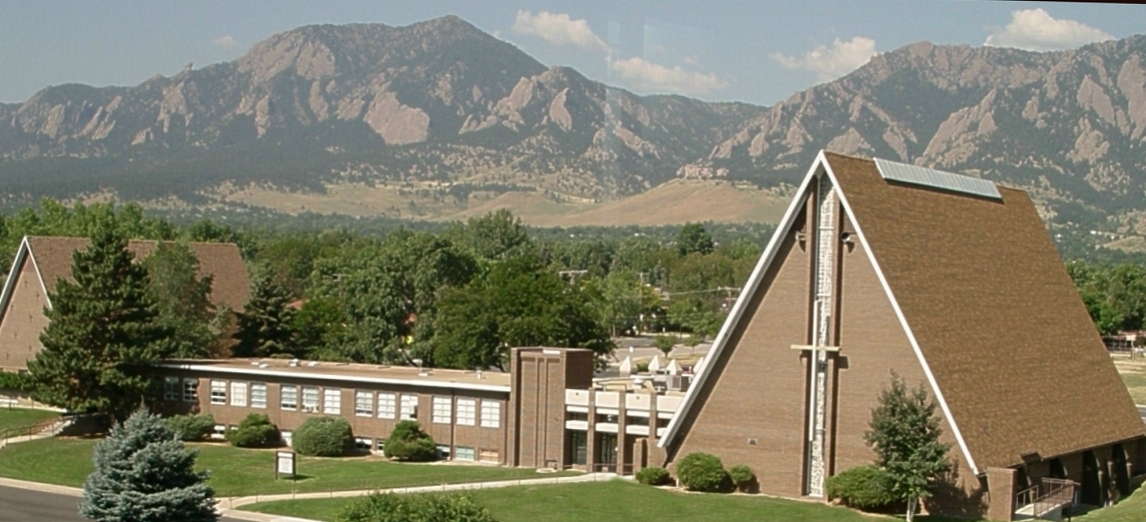Celebrating the Tenth Anniversary of MV’s Solar and Energy Efficiency Programs
Gary Schmitz, Fred Walls, Arthur Howe, Mary Beth Downing
Impact: $75,000 in Total Savings
It’s been ten years since Mountain View embarked on a journey to reduce its electricity use and install solar panels. This is an appropriate time for the Solar and Energy Committee to report about the project’s performance and compare actual results to the forecasts made when the project was first proposed and approved by the congregation in 2010.
We are pleased to report that the solar project and energy efficiency measures resulted in $75,000 in net financial benefits to Mountain View since its inception. The actual benefits are far greater than the original forecast of $7,300 in savings during the decade. This excellent outcome is due to: the greater output of the solar panels; more successful energy efficiency measures and; a beneficial change in how we pay for electricity. These factors are explained in greater detail in the balance of this report.
The Solar and Energy Committee would like to thank the congregation for their support and generous contributions toward the cost of the solar panels.
Solar Panel Performance: In 2011, Mountain View installed 187 solar panels capable of producing a maximum output of 43 kilowatts (kW) of electricity. Chart 1 shows that Mountain View’s solar panels have produced greater than 60,000 kilowatt hours (kWh) annually for most of the past 10 years. This is enough electricity to meet the annual needs of 8-10 average Colorado residences. Solar panel production was lower in our start-up year—2011—when the panels were operational only 7 months. The dip in 2014 production was due to squirrel damage to solar panel wiring.
The actual average energy production over the ten-year period was 60.8 megawatt hours (mWh) per year, including the years 2011 and 2014 (1,000 kWh=1mWh). In our 2010 analysis of the solar project, we forecast average solar output of 55.9 mWh per year for the first ten years. Mountain View’s actual solar electricity generation was 8.8 percent greater than forecast in 2010.
Energy Efficiency Measures: During the past 10 years, Mountain View completed a comprehensive set of efficiency measures to reduce the Church’s electricity consumption. The following is a partial list of the energy efficiency measured that have been taken:
- Installed 492 high efficiency fluorescent tubes
- Installed approximately 150 CFL bulbs
- Installed 24 LED spotlights
- Installed 12 motion sensor switches
- Installed high efficiency rooftop HVAC unit
- Installed high efficiency refrigerators and freezers
- Installed high efficiency hot water pump
- Thermostats set according to daily usage
- Replaced CFL bulbs with LED bulbs in the lower Sanctuary chandeliers
- Insulated the crawl space along the south side of the small A frame
- Insulated the utility loft in the small A frame
- Replaced 5 troffers with LED fixtures in the south hallway
- Replaced troffers in Frasier Parlor north with dimmable LED puff fixtures.
- Working on same upgrade in Frasier Parlor south
- Replaced CFL bulbs with LED bulbs in all small rooms
- Replaced CFL bulbs with LED bulbs under the balcony in the Sanctuary
- Insulated water pipes in the north boiler, south boiler and A frame utility loft.
Chart 1 shows Mountain View’s electricity consumption from 2008 to 2020. Prior to undertaking energy-efficiency measures, electric consumption averaged 75.8 mWh per year from 2008-2010. Since 2011, electric consumption averaged 51.8 mWh per year, almost a 32 percent reduction.
So, during the past 10 years the average annual electric output from the solar panels was 60.8 mWh while our average annual electric use was 51.8 mWh. The excess production fed into Xcel’s system and we received payments of approximately 2 cents per kWh for this “excess production.”
Financial Performance: The energy efficiency and solar projects have resulted in a total net financial benefit of $75,000 to Mountain View since 2011. This results from a total of $139,700 in savings on our Xcel electric bill less $64,700 in principal and interest payments on the mortgage to finance the projects’ capital costs.
Chart 2 illustrates the $139,700 in Xcel bill savings. The chart indicates that, prior to undertaking these projects, Mountain View’s annual electric bill averaged $11,000 per year (2008-2010). The line labeled “Projected Xcel Bill Without Efficiency & Solar” indicates the amount that Mountain View would have paid to Xcel. In that scenario, Mountain View’s annual electric usage would have remained constant (with no efficiency improvements) and the electric bill would have varied with the Xcel electricity price changes (an average increase of one percent per year). Without the solar and efficiency measures, Mountain View would have paid Xcel $123,600 from 2011 to 2020 (note: the 2020 scenario was reduced 25 percent to account for COVID-19 restrictions). The largest part of the savings was caused by the elimination of the Xcel demand rate component of our bill in 2012. Mountain View moved from the demand rate through the combination of increased energy efficiency, solar electricity production, and the installation of a demand controller. The line labeled “MV Actual Bill After Solar and Efficiency” indicates Mountain View received payments from Xcel totaling $16,100 over the past ten years. When combined, the bill savings of $123,600 plus the Xcel payments of $16,100 produced the $139,700 in net savings on our Xcel bill.
The “negative bill” is the combined result of three transactions with Xcel. First, Mountain View receives monthly payments of 4.5 cents per kilowatt hour from Xcel based upon the total electrical output from our solar panels. Xcel buys these Renewable Energy Credits (RECs) as part of its compliance with Colorado’s Renewable Energy Standard requiring utilities to diversify their electricity supply. Second, Mountain View is paid approximately 2 cents per kilowatt hour when our solar panel electric production exceeds our consumption. Since 2011, Mountain View received nearly $28,000 from Xcel in REC and excess production payments. Finally, after changing from the demand rate structure in 2012, Mountain View pays only a monthly fee of $20 for metering and billing costs. Over the past ten years, the REC and excess production payments to Mountain View exceeded our monthly Xcel bill by a total of $16,100.
Carbon Reduction: During the past five years, the Green Earth Team purchased carbon dioxide (CO2) credits so that the Mountain View church building could be completely carbon neutral. Because our solar panels produce more electricity than we consume, we are carbon neutral in our electricity use. However, additional efforts are necessary to offset the carbon associated with our natural gas consumption. We partnered with a Fort Collins based nonprofit–Trees Water, People to combat climate change through the sequestration of carbon dioxide. For the last five years, the Mountain View congregation has supported reforestation and solar heating projects at the Pine Ridge Indian Reservation in South Dakota and reforestation and high efficiency clean cook stoves programs in Central America. These projects not only sequester CO2, but help indigenous communities by providing jobs, income, watershed restoration, and restoration and improvement to local ecosystems. These projects supported by our contributions removed 495 tons of CO2 from the atmosphere.
The Future: Our solar panels are expected to last for an additional 20 years or more–enabling Mountain View to continue to enjoy lower electric bills for many years. In fact, a significant benefit of our own electric production is that we are protected, for the most part, from future Xcel electric price increases. This means that the bill savings component of our financial benefits will increase in the future as electricity costs increase.
We will retire our energy efficiency and solar mortgage in 2026–15 years after the beginning of the project. We then will save our $6,500 annual mortgage costs. In 2031, the REC payments from Xcel, $2,800 per year, will end.
Celebrating 10 Years: April 25, 2:00 – 3:00 pm
Our Green Earth Team is planning a celebration of the 10 year anniversary of our solar panels!
We are hoping to have refreshments, activities including bulb planting, making “seed bombs,” and giving away mason bee homes!


